CAROLINE MONNET
PIZANDAWATC /
THE ONE WHO LISTENS / CELUI QUI ÉCOUTE



Exhibition
Art Museum at the University of Toronto, 2024
Photo documentation by Toni Hafkenscheid
Caroline Monnet’s first exhibition in a Toronto public gallery comprises a survey of her prolific production, centering on a new series of sculptures exploring language reclamation and intergenerational transmission. The title, Pizandawatc, comes from the traditional name of Monnet’s family before surnames were changed in Kitigan Zibi by the Oblates. Meaning “the one who listens” in Anishinaabemowin, the title also honours the artist’s great-grandmother, Mani Pizandawatc, who was the first in her family to have her territory divided into reserves. Exploring the notion of territory from the perspective of cultural attachment and ancestral memory, the exhibition articulates new visions that harken both to Indigenous legacies and futures.





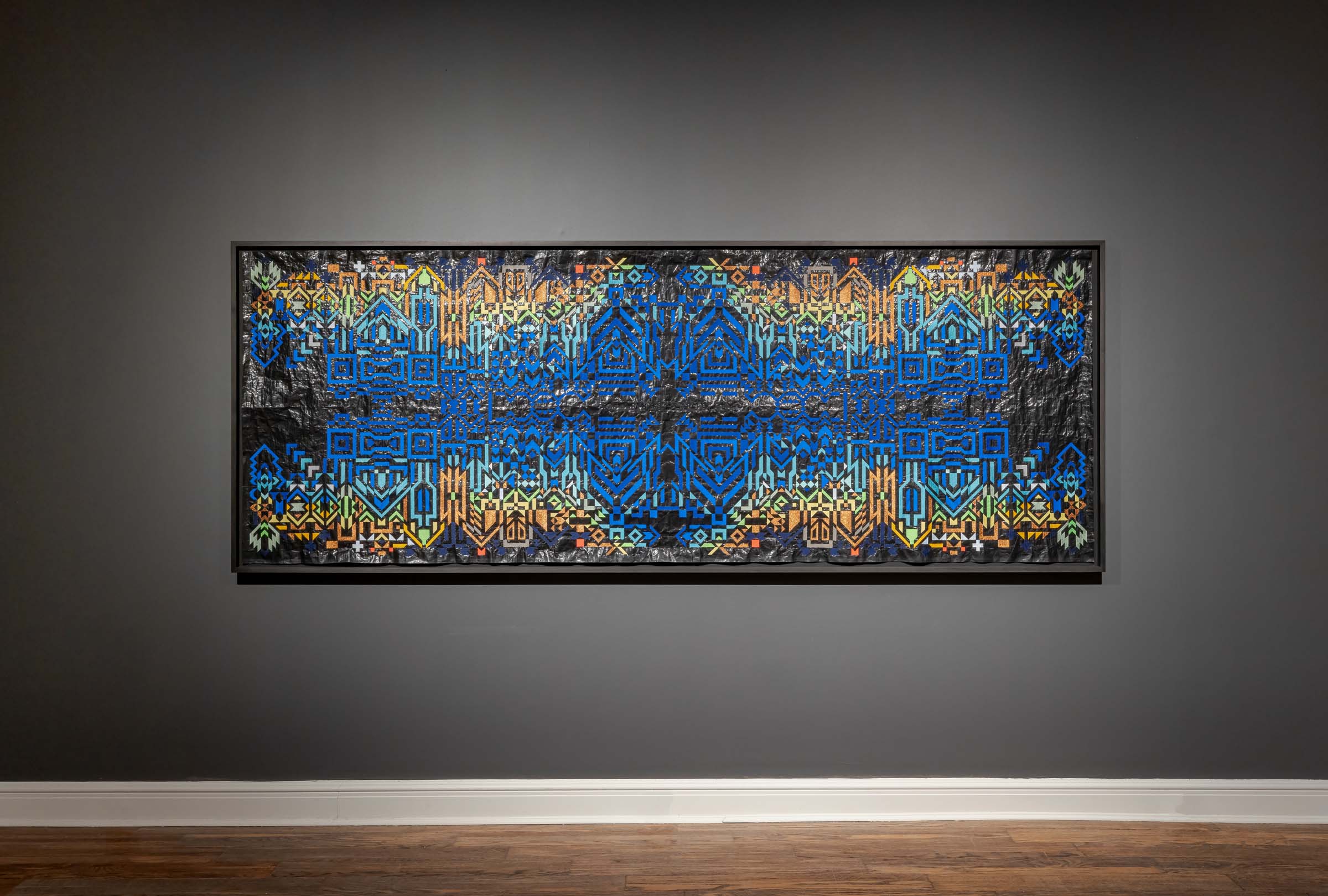
The new body of work in Pizandawatc continues Monnet’s considerations of sculpture and sound as linked to temporality, orality, and knowledge sharing. Driven by an impulse to materialize language into durable physical form in order to preserve it, Monnet attempts to counter the ephemeral nature of the spoken word and to reclaim the Anishinaabe language by recording its soundwaves in layered native and industrial wood. Additional bronze elements capture shapes of weathered wood naturally modified by experience on the terrain, gesturing to matter and the elements. Evoking the relationship of speech to the land and how the Anishinaabeg traditionally named the land, these works examine the influence of topography on the rhythms of languages and cultures, envisioning the territory as a living form of knowledge transfer over generations. Each piece depicts a different phrase encapsulating the power of nature and the passage of time.
Presenting a range of new and older works relating to ideas engaged in the new series, Pizandawatc offers a comprehensive view of Monnet’s complex aesthetic vocabulary, polyvalent material dexterity, and cohesive conceptual investigation. Combining the visual vocabulary of Anishinaabe cultures with industrial materials, Monnet’s sculptures, mixed media works, videos, and installations expand on the centrality of the land and its resources in Anishinaabe spirituality, history, and resilience.








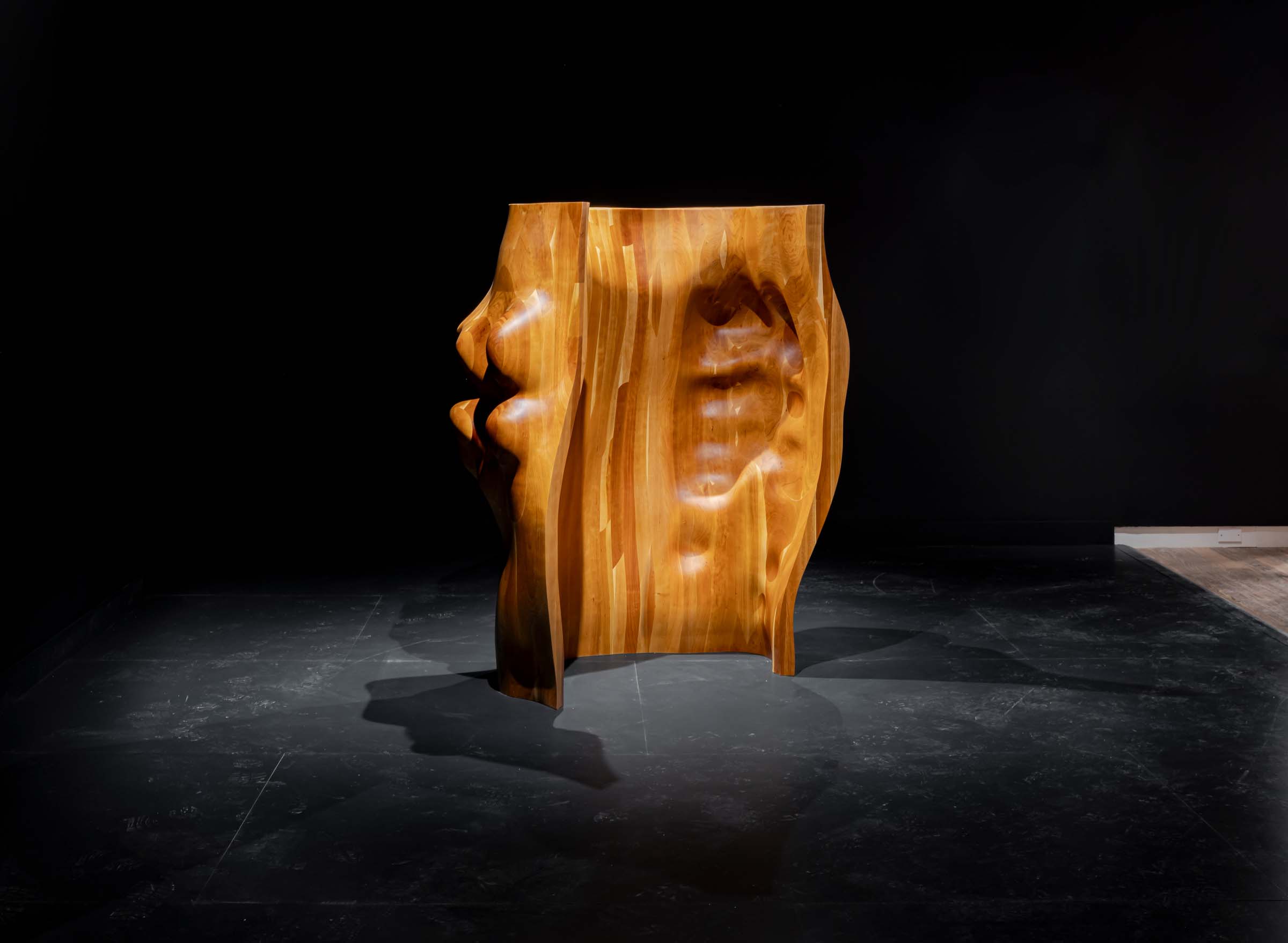


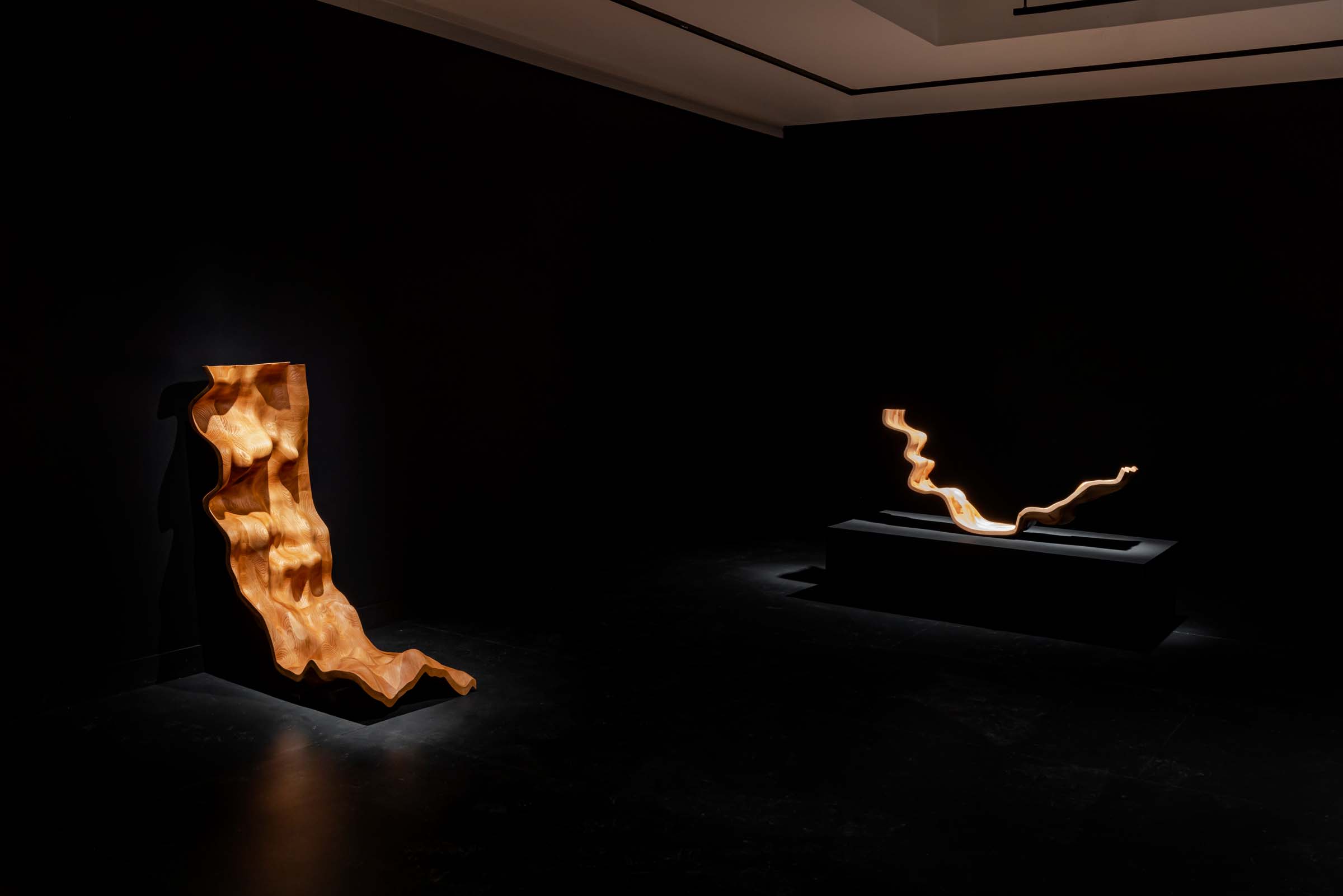
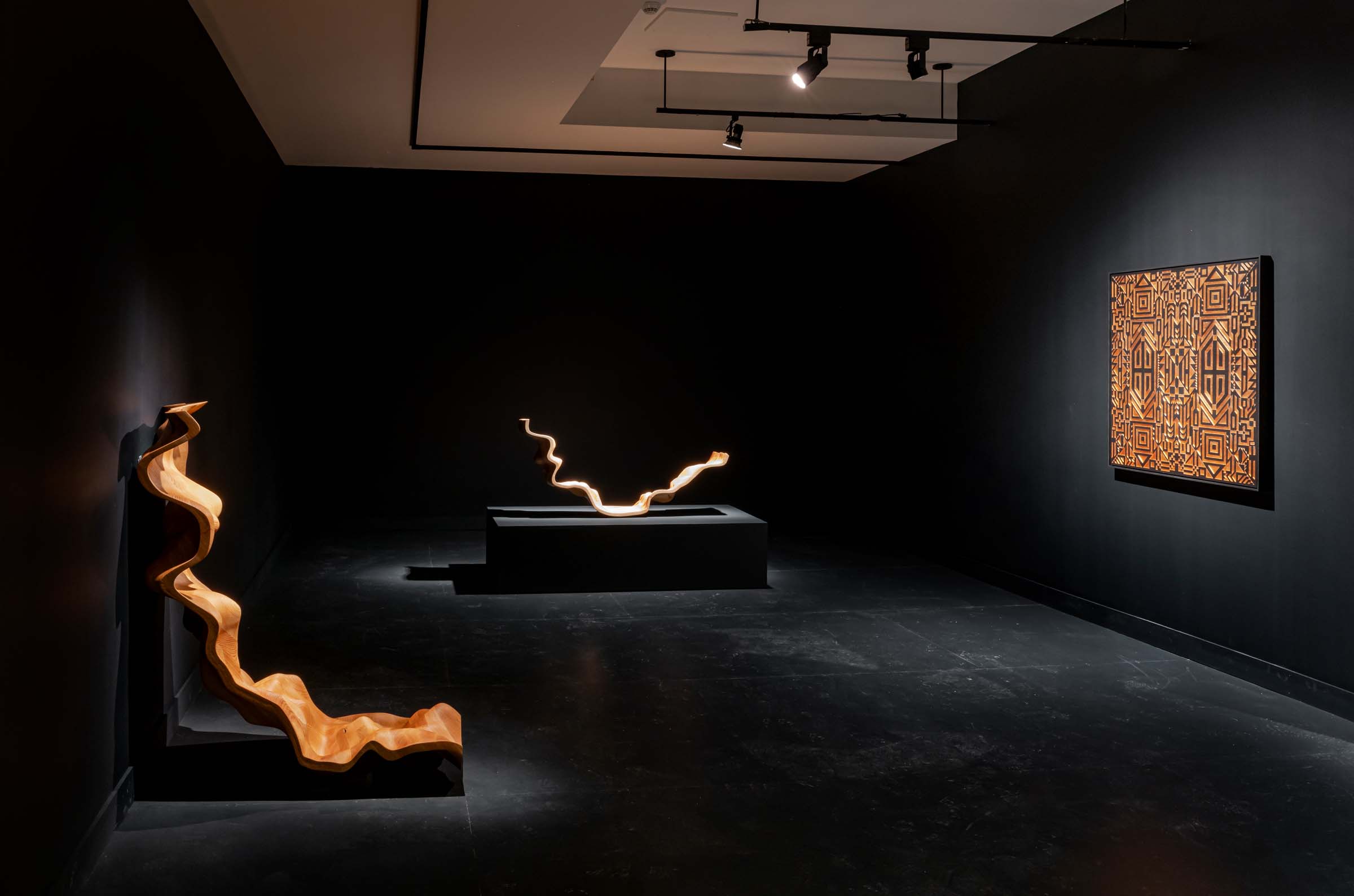
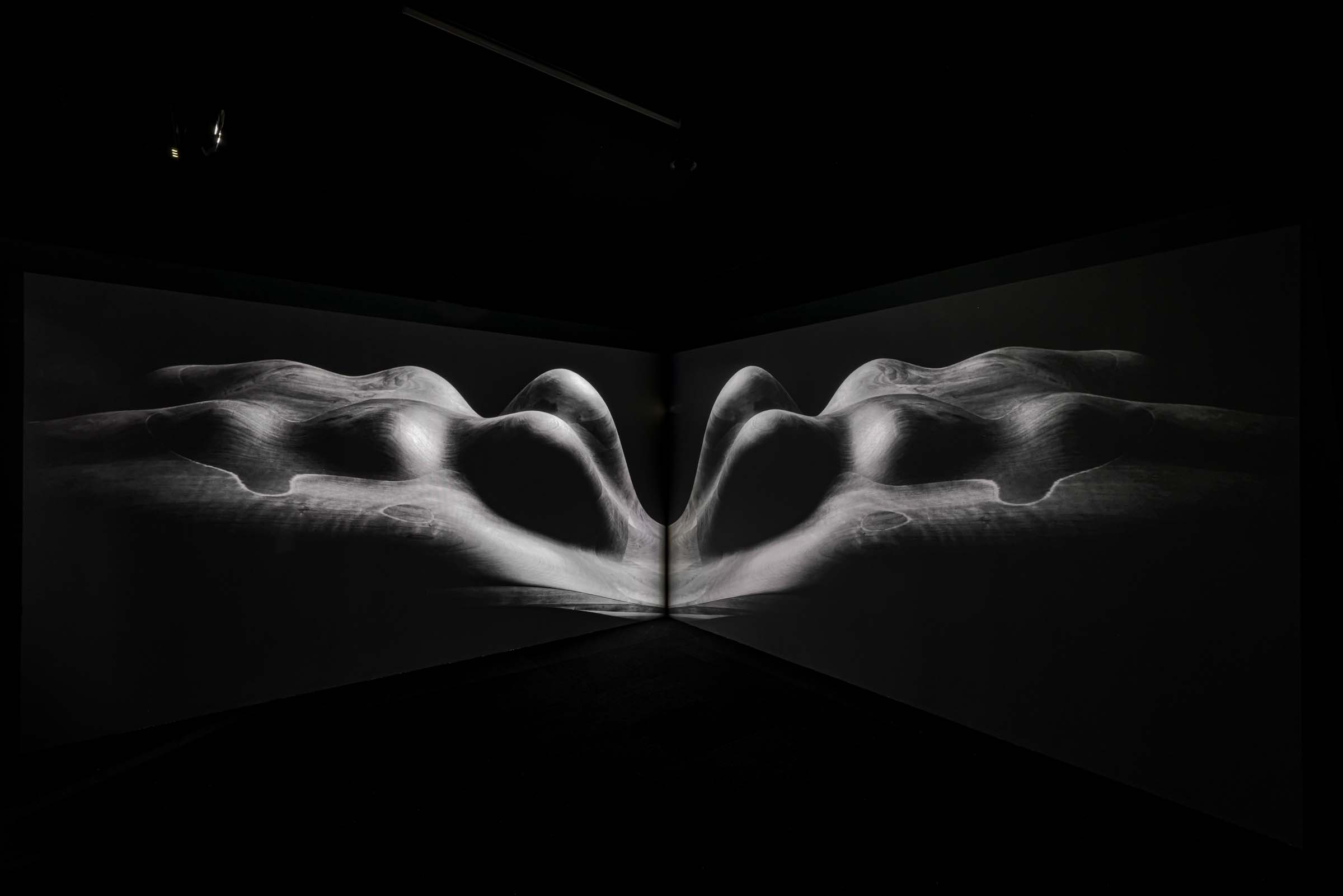



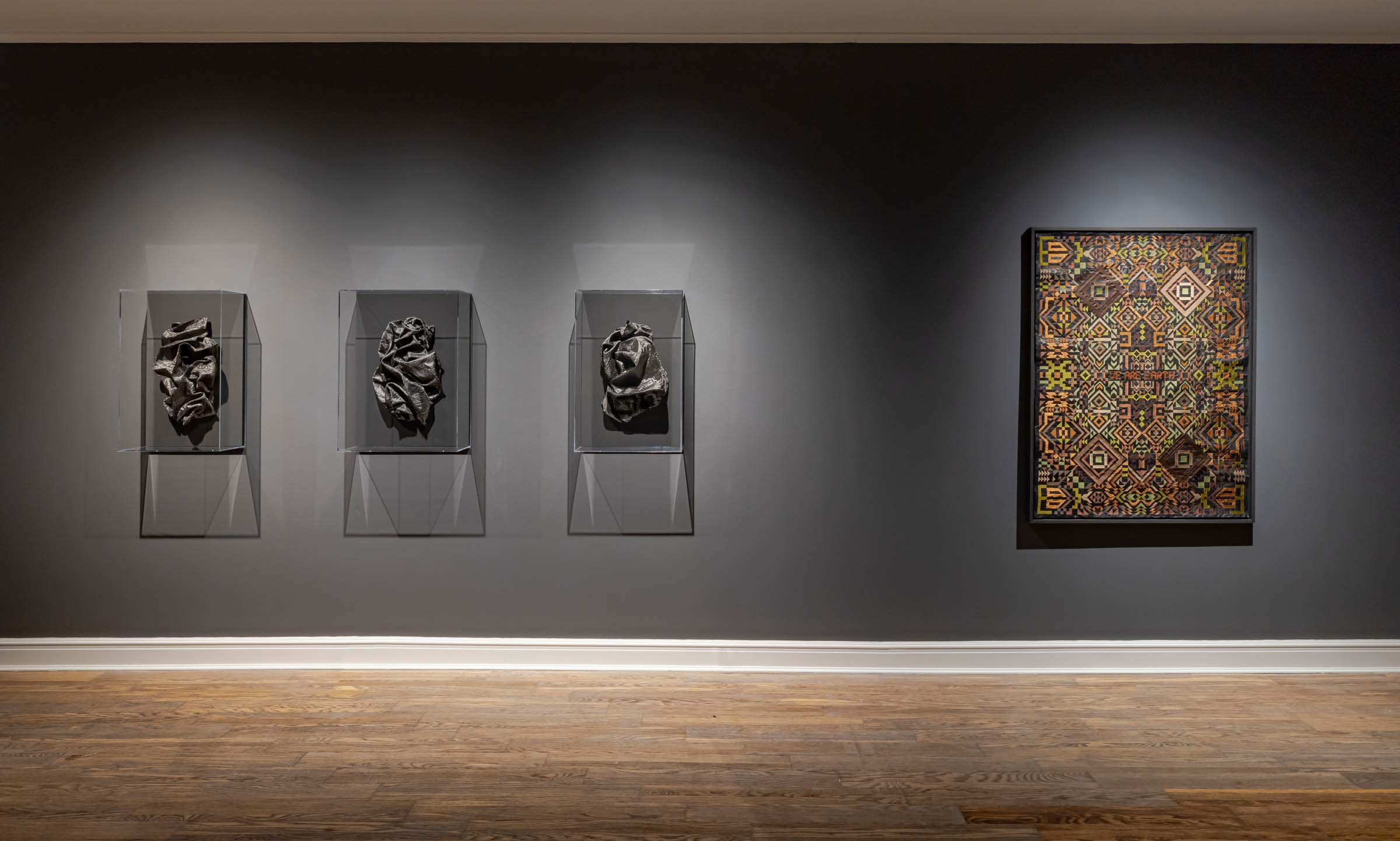






























Artist Info
Caroline Monnet (Anishinaabe/French) is a multidisciplinary artist from Outaouais, Québec. She studied Sociology and Communication at the University of Ottawa (Canada) and the University of Granada (Spain) before pursuing a career in visual arts and film. Her work has been featured at the Whitney Biennial (NYC), Toronto Biennal of Art, KØS museum (Copenhagen), Museum of Contemporary Art (Montréal), the National Art Gallery (Ottawa). Solo exhibitions include Montreal Museum of Fine Arts, Schirn Kunsthalle Frankfurt, Arsenal Contemporary (NYC) and Centre d’art international de Vassivière (France). Her work is included in numerous collections in North America as well as the permanent UNESCO collection in Paris. Her films have been extensively programmed at international film festivals including TIFF and Sundance. In 2016, she was selected for the Cannes Festival Cinéfondation residency in Paris. Monnet is recipient of the 2020 Pierre-Ayot award and the Merata Mita Fellowship of the Sundance Institute, and she was recently named Compagne des arts et des lettres du Québec. She is based in Montréal and is represented by Blouin-Division Gallery.

